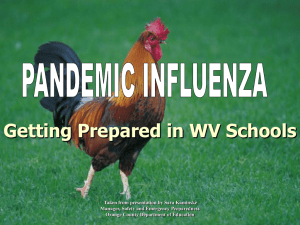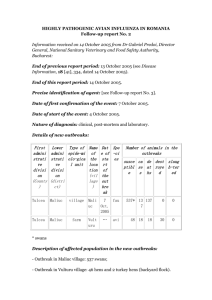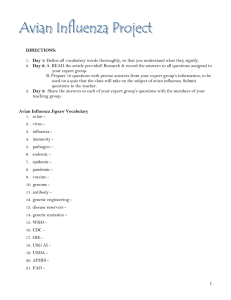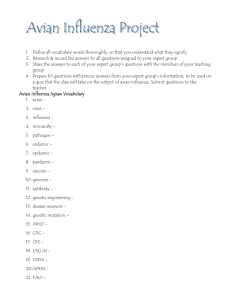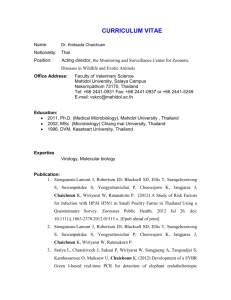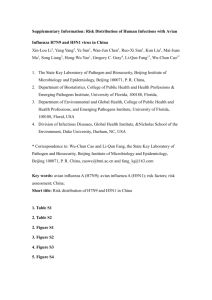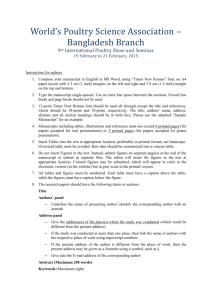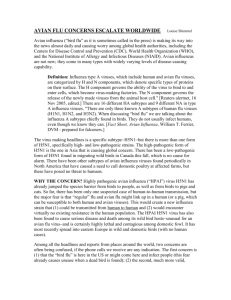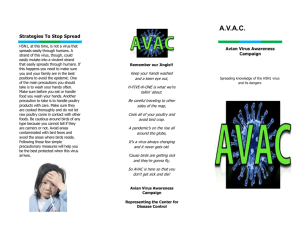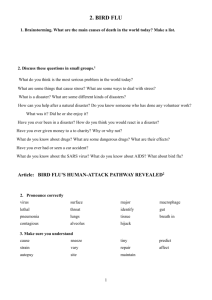Influenza_H5N1
advertisement
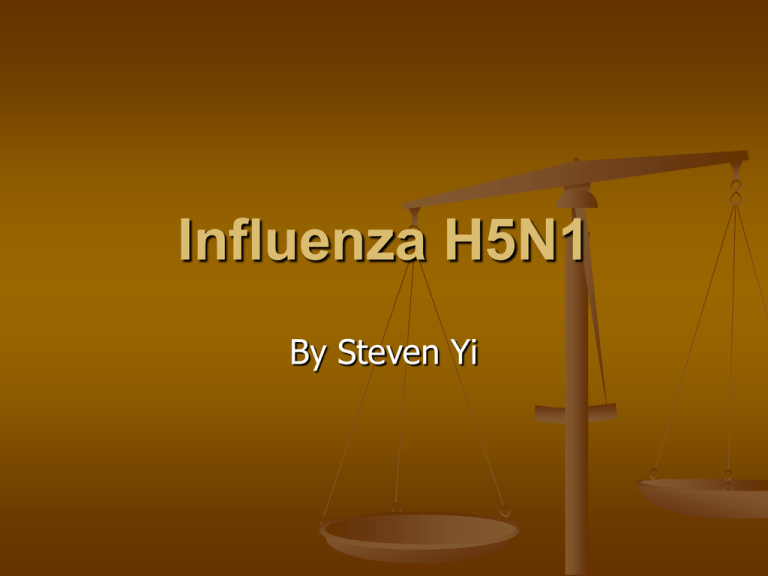
Influenza H5N1 By Steven Yi Contents Overview 2. History 3. Attachment 4. Entry 5. Replication 6. Lytic Cycle 7. Diagnosis 8. Treatment 1. Overview Influenza, or, more commonly, the flu, is an infectious disease caused by single-stranded RNA viruses from the family Orthomyxoviridae. H5N1 is a particularly pathogenic strain adapted to avian populations. Over 60% of confirmed victims of avian flu have died, but there only seems to be limited human-to-human communication of the disease. If this strain were to become communicable between humans, a severe pandemic would be likely. History In 1997, H5N1 first materialized as an extremely lethal strain of avian flu; a disease that had hitherto only produced minor sickness. The disease that materialized was capable of rapidly killing poultry and required the culling of millions of animals to contain the spread of the disease. Hong Kong culled its entire domestic population. Since then, hundreds of outbreaks were reported in Asia. One of the things that make this strain of avian flu so dangerous is its capacity to mutate. Huge amounts of money have been spent by the US and other countries in anticipation of H5N1 mutating into a form capable of spreading from human to human. Without adequate preparation, such an outbreak could potentially take out a significant portion of the human population. Attachment and Entry Influenza viruses bind to sialic acids on the surfaces of epithelial cells, such as those found in the nose, throat, and lungs, and red blood cells via antibodies called hemaglutinin. The cell then engulfs the virus through endocytosis. The virus then injects its vRNA, RNA polymerase, and accessory proteins into the host cell’s cytoplasm. These materials are then transported to the nucleus of the cell. Replication + Lytic Cycle RNA polymerase transcribes negative- sense vRNA into positivesense (translatable into proteins) vRNA. The vRNA then either remains in the nucleus or is transported into the cytoplasm, where it is translated into viral proteins. These are then either secreted by the Golgi body to the cell surface, or transported back into the nucleus to be combined with negative-sense vRNA and assembled into new viruses. Meanwhile, other proteins assist in degrading host mRNA or inhibiting the translation of host mRNA. Nucleotides from the former for vRNA synthesis. New viruses do not exit the cell by lysing the membrane; instead, they bud off the host cell, taking with them a portion of the plasma membrane. The host cell is now dead. Symptoms Fever Cough Aches Sneezing General discomfort Problems breathing Pneumonia Sore throat Conjunctivitis Treatment There are currently no effective treatments for H5N1. Mainly, drugs such as Tamiflu are used that act as asneuraminidase inhibitors that prevent the virus from adhering to the cell membrane. The constant and rapid evolution of H5N1 renders vaccines and largely ineffective. Only good hygiene and safe, cautious practices can hope to limit the spread of an H5N1 outbreak, should one occur in the near future.

